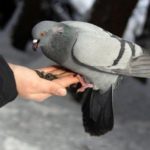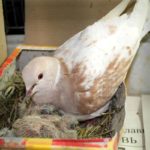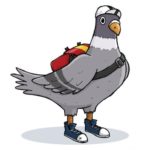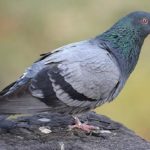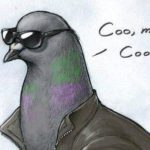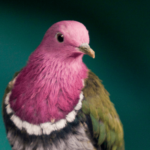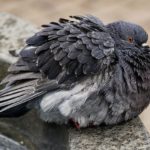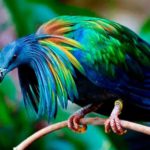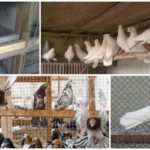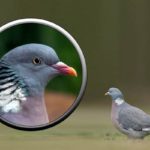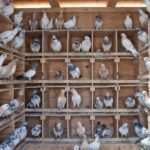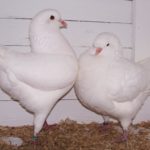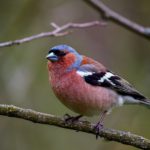By observing the habits and behavior of pigeons, breeders notice the characteristic features of the birds' gait. Movements can play a symbolic role, communicating the needs of birds, or be physiological in nature. Thus, the owners and visitors of the dovecote make various assumptions about why pigeons nod their heads when walking. There are many versions of the answer to this question, but not all options have scientific justification and factual confirmation.
Why does a pigeon shake its head when walking?
Pigeons make unusual movements of their necks forward and back in time with their steps.The higher the speed of movement on the ground, the more nods the bird makes. It is easy for an observer to notice that, while standing still, the pigeon stops moving its head. The characteristic movement resumes with the first step.
An interesting feature of pigeons arouses interest among ordinary people and often becomes the subject of scientific discussions. Several assumptions are most widespread, and some versions are classified by ornithologists as myths.
Maintaining center of gravity
The theory is based on the structure of the body, the disproportion of which becomes the reason for forced movements. Birds move along the ground in steps, and short legs are not able to provide the body with a stable position in space. Pigeons move their heads to maintain balance.
Distrust of the version of maintaining balance is caused by the fact that birds do not nod their heads when they stand still. The experimental results also refute this assumption. When a pigeon was placed in a closed cube on a treadmill, the subject soon stopped moving its neck. The experience gave rise to another option, according to which the reason for the nods lies in attempts to stabilize the image.
Features of the structure of the eye
The eyeball of pigeons is designed in such a way that the pupil is constantly in a static position and, in order to increase the viewing angle, the bird has to make peculiar head movements. The hypothesis is supported experimentally and has received the greatest recognition in scientific circles.
When conducting an experiment with a treadmill, the pigeon walked forward and nodded until its speed matched the speed of the track. At this moment, the image reproduced by the eye no longer lagged behind the real one. Based on the data obtained, it was concluded that pigeons tremble and move their heads to get a full view of the surrounding area.
Monocular vision
Some experts are of the opinion that pigeons make neck movements due to monocular vision. Anatomically, birds' eyes are located on the sides, so they see the image of an object one-sidedly. The fields of vision of the left and right eyes practically do not overlap.
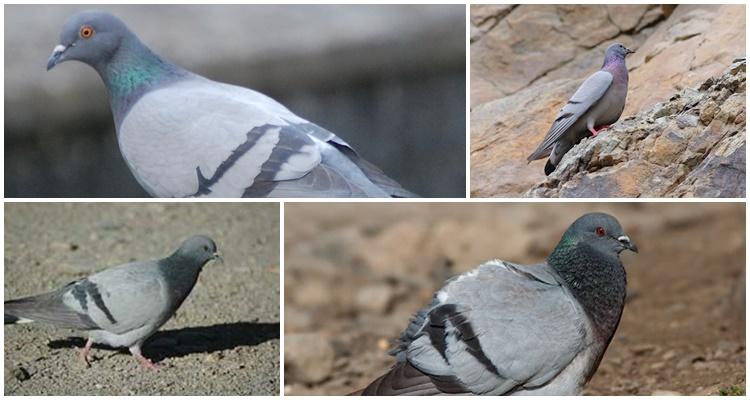
Pigeons shake their heads in order to obtain a three-dimensional spatial image and objectively evaluate information about the surrounding area and moving objects.
Attracting females
During the mating season, many birds make peculiar ritual movements to attract individuals of the opposite sex, symbolizing their readiness to mate. According to one theory, the dove characteristically twitches and nods its head near the female, and the dove moves in response.
Common Myths
Some assumptions remained unconfirmed, without receiving the approval of scientists.
Popular myths boil down to the following:
- The legacy of ancestors. According to this hypothesis, pigeons inherited the habit from dinosaurs.Some species of ancient animals performed similar movements to maintain body balance.
- Ear for music. A number of experiments have shown that pigeons react to the sounds of music by moving faster and jerking their heads. This easily leads to the idea that the bird perceives the melody and shakes its head to the beat.
- Restless character. In this embodiment, the movement of the neck becomes a consequence of fear. The more worried the bird is, the more often it twitches, alerting its relatives of danger.
- Meteorological changes. Pigeons nod their heads in response to changing weather.
The factors on which popular versions are based can indirectly influence the behavior of birds, but ornithologists do not consider them a direct cause of the characteristic head movement in pigeons. The theory about the structure of the organs of vision received the greatest official confirmation.

